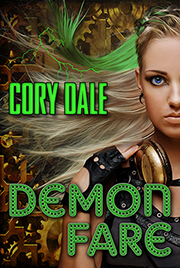The special Boosting the Signal week for the NIWA 2015 anthology Asylum continues! Today’s featured author is Pamela Bainbridge-Cowan, whose story is “Going Sane”—and whose unnamed narrator is seeking to escape The Facility. (And oh my no, a name like The Facility is not the SLIGHTEST BIT OMINOUS.) Before that, though, there’s a goal of figuring out how to cope with life, and Pamela’s sent me an excerpt in which her narrator and her friend Vo discuss how the narrator has had to cope with what life has thrown her up till now, via painting.

I had one friend at The Facility, maybe one friend anywhere. Of course the universe, with its ironic sense of humor, made sure that he—the least likely to help me—would be the only one who could.
Vo Danielson. Unless you’ve spent your life beyond the Milky Way you’ve heard of him: the best musician of our time, maybe of all time. And also that guy who wrapped his hands around a transport slide wire which discharged, melting his hands into unrecognizable lumps of useless flesh.
I remember the first time we talked. It was late and we were the only ones in the community lounge. Earlier, the walls of my room had felt like they were shrinking. I was having one of my manic nights, a dish of self-pity served with a side of rage.
Brazenly I stared at his hands, balled up into fists on his lap. “They say you didn’t know the wire carried enough energy to fry your hands. Did you?”
I was sitting at one of the carved mahogany tables. Had been reading. He was sitting on the end of one of the tastefully horrific white and pink silk couches my mother had donated. Had been doing nothing. He looked up and smiled. “I knew,” he said.
Later, he asked about my family.
“My family…” I repeated as I thought about the question. “My family is brilliant and unique. My mother, before she retired to be my business manager, was in genetic R&D with Myer-Hoy. She designed me when she was sixteen and perfected her work at nineteen when she got her first breeding license. She hadn’t wanted me to be conventionally pretty—there were far too many pretty people. Instead, my pattern was a truly heteromorphic design. As you can see, she made my features stark and angled, my eyes sharply slanted and of course just this lovely slash across my face for a mouth. She also wanted me tall, but since my torso is about average she put most of my height in my lower legs. Then, to make things more symmetrical she designed my forearms to be extra-long. She thought she was creating a really new exotic, not an ugly freak who looks more like an insect than a human.”
Sometimes Vo made me forget what I was. Forgetting is a set up. It’s like drinking, or drugs, or dreams. It’s a temporary fix that takes you up and drops you so you hit the ground again. It hurts when you hit the ground because you can remember the last time and the time before that: all those bad landings. The aggregate should kill you—but it doesn’t.
Vo eventually asked me why I paint the things I do.
I didn’t want to talk about that, but I didn’t want him to go away again either. Finally I said, “When I was thirteen I saw a dead raven beside a garbage can. It was an old bird, feathers ruffled, not bleeding, not shot. I thought maybe it had a broken neck, some sort of natural death. I wanted that to be true. Someone had tied a wide pink ribbon around its legs. Maybe so they could carry it without touching it too much. I don’t know. And why a ribbon, something so pretty? It was death and beauty. It was black and pink. Rough and smooth. I ran home and painted it. Everyone thought it was amazing. My mother saw it as my first truly creative moment. It was proof that she’d done everything right. Not just my design but all of it—not marrying, giving all her passion to her work. It was affirmation.
“She took it to a gallery and they wanted more. So for five years, I painted dead birds. Dead birds with ribbons around their feet or their necks. Dead birds covered with flowers, hung from twisted ivy in the branches of trees, heaped on the shores of breathtaking lakes. I got sick of dead birds. One day I painted a bird without feathers. Raw sinews and tissue purple with blood, feathers torn off and thrown down. I was having a tantrum. And they loved it.”

Buy the Book: Amazon (Kindle) | Amazon (Paperback) | Kobo
Follow Pamela Bainbridge-Cowan On: Official Site | Facebook | Twitter
Follow NIWA On: Official Site | Facebook | Twitter




